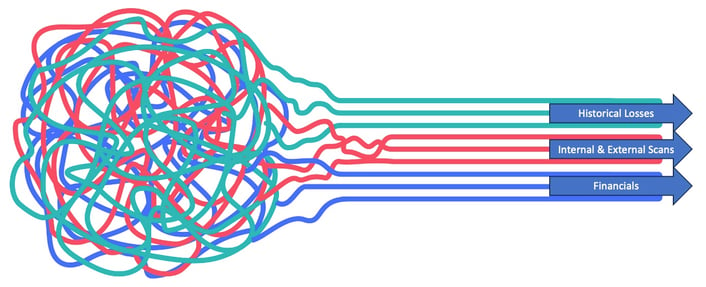
Cyber Insurance Planning
Cyber insurance premiums can vary widely based on a range of factors, including the size and industry of the organization, its cybersecurity practices, the coverage limits and types of coverage selected, and the risk profile of the insured. Therefore, providing a "typical" cyber insurance premium is challenging, and ultimately requires a complete knowledge of the organization's cyber risk in financial terms.
Cyber insurance premiums for small to medium-sized businesses could start at a few thousand dollars annually, while premiums for larger enterprises with more extensive coverage needs and higher risk exposures could reach into the tens or hundreds of thousands of dollars.
Key factors influencing cyber insurance premiums include:
1.Company Size and Industry: Larger organizations and those in industries with higher cybersecurity risks, such as healthcare or finance, may face higher premiums.
2.Revenue and Assets: The financial size of the company and its total assets can impact the premium.
3.Security Measures: Insurers assess an organization's cybersecurity practices and risk management measures. Companies with robust cybersecurity measures in place may qualify for lower premiums.
4.Past Cyber Incidents: A company's history of cyber incidents, data breaches, or claims can influence premiums. A track record of strong cybersecurity practices may lead to lower premiums.
5.Coverage Limits and Deductibles: The extent of coverage and deductible amounts selected by the insured can impact the premium. Higher coverage limits and lower deductibles typically result in higher premiums.
6.Geographic Location: The geographical location of the business can be a factor, as cyber risk can vary based on regional cybersecurity trends and regulations.
7.Third-Party Relationships: The extent of third-party relationships, such as vendors or partners, can impact the risk profile and, subsequently, the premium.
8.Policy Features: Additional policy features, such as coverage for business interruption, legal expenses, or regulatory fines, can affect the premium.
Given the dynamic nature of the insurance industry and the evolving landscape of cyber threats, it is advisable for organizations to work closely with insurance providers to obtain tailored quotes based on their specific circumstances. Additionally, seeking guidance from cybersecurity professionals to enhance risk management practices may contribute to more favorable premium rates.
For the most accurate and up-to-date information on cyber insurance premiums, organizations should consult directly with reputable insurance providers and brokers.
Thrivaca. What's guiding your Cyber Insurance planning?









